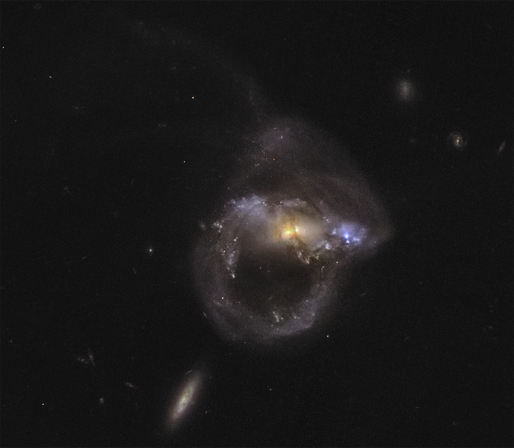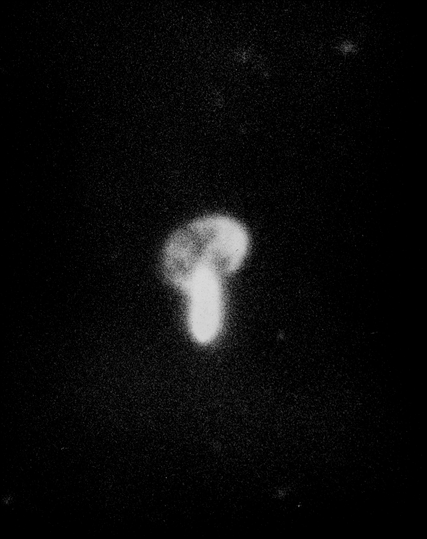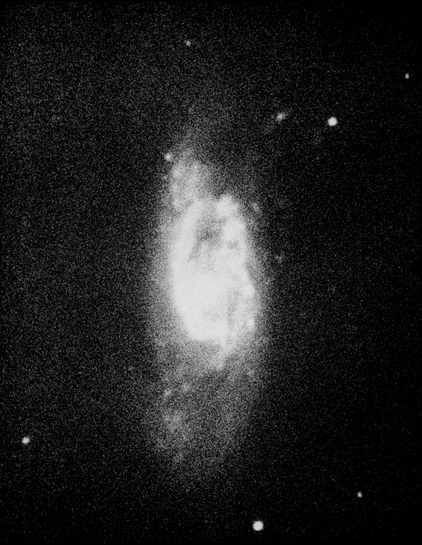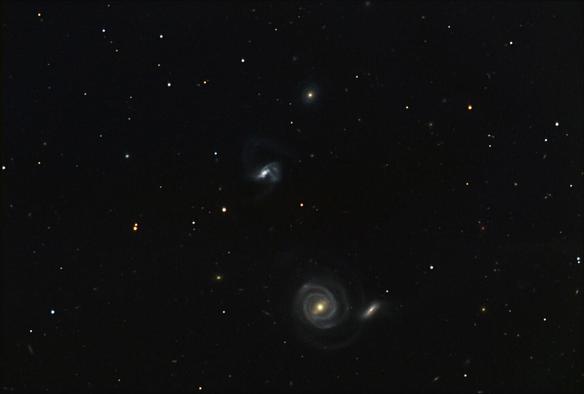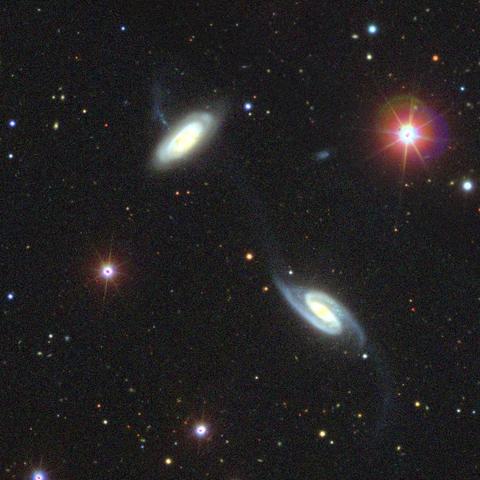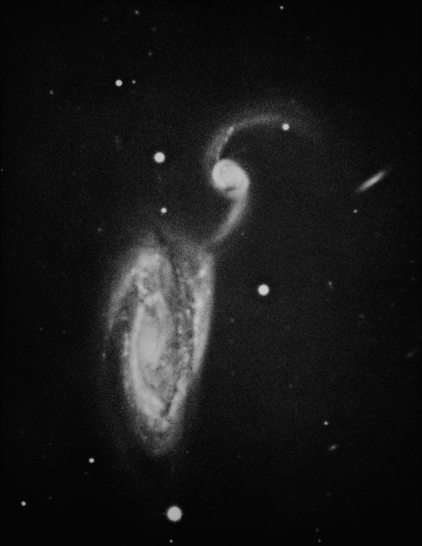Image of Arp 202, also known as NGC 2719 and NGC 2719A, from the Atlas of Peculiar Galaxies by Halton Arp (1966).
In the original catalog, it was in the category: Amorphous galaxies - Material ejected from nuclei. This pair of galaxies, an edge-on disk galaxy near the bottom of the frame and a smaller irregularly shaped galaxy above it, had a recent interaction which likely severely perturbed both galaxies.



